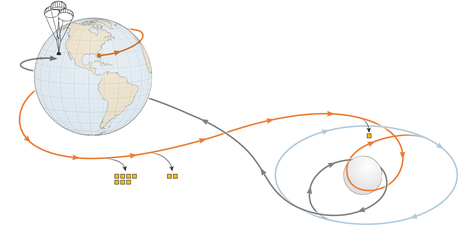A technical hiccup kept NASA’s giant moon rocket, the Space Launch System, from getting off the launchpad on Monday. So NASA will try again on Saturday, hopeful that its engineers have resolved the issue. Here’s what you need to know about the second attempt to begin the Artemis I mission.
When is the launch, and how can I watch it?
The launch is scheduled for 2:17 p.m. Eastern time. In the case of unfavorable weather or technical glitches, the liftoff can be pushed back by as much as two hours, to 4:17 p.m.
NASA Television’s online coverage of the Artemis I launch begins at 5:45 a.m., when a commentator will describe the process of filling the rocket’s giant propellant tanks. The agency’s full coverage will begin at 12:15 p.m.
Coverage in Spanish will begin at 1 p.m.
Forecasts show that there is a 60 percent chance of favorable weather at the beginning of the launch window, and the odds improve to 80 percent by the end of the two-hour time slot.
You can subscribe to The Times’s space and astronomy calendar to get a reminder on your personal calendar about the launch and other events.
If Artemis I gets off the ground, coverage will continue for about two hours after liftoff through what is known as the trans-lunar injection engine firing to push the Orion spacecraft out of low-Earth orbit on a trajectory to the moon.
If the launch is postponed again, NASA may also try to lift off on Monday, Sept. 5 or Tuesday, Sept. 6. Current forecasts give a 70 percent chance of favorable weather on Monday.
If the rocket does not get off the ground by Tuesday, NASA will need to roll it back to the Vehicle Assembly Building, which is essentially a giant garage for servicing rockets. A launch attempt after that could be later in September, or in October.
Why didn’t the rocket launch on Monday?
The launch was halted on Monday because a sensor reported that one of the rocket’s four core-stage engines was not sufficiently chilled, part of the preparations needed before ignition.
The temperatures of three of the engines were approaching the target of minus 420 degrees Fahrenheit, while the temperature of the fourth appeared to be about 40 degrees warmer, said John Honeycutt, the program manager overseeing the development of the Space Launch System rocket. If the engine was too warm, it could have shut down during liftoff.
At a news conference on Thursday, mission officials said analysis of other data had convinced them that the temperature sensor was faulty and that the engine actually was sufficiently cold.
What are the Space Launch System and Orion?
For astronauts to get to the moon, they need a big rocket. The Space Launch System is that rocket — the most powerful one since Saturn V took NASA astronauts to the moon in the 1960s and 1970s. The one waiting on the pad to launch on Monday is 322 feet high, and will weigh 5.5 million pounds when filled with propellants.
The rocket, known as S.L.S., has some visual similarities to the retired space shuttles. This is by design: To simplify development of its new moon rocket, NASA reused much of its 1970s space shuttle technology.
The Space Launch system’s cargo on Monday is Orion, a capsule that is designed for trips of multiple weeks beyond low-Earth orbit. It will not have a crew aboard for this flight but can carry up to four astronauts. If this flight is a success, a quartet of astronauts will travel on the next mission, Artemis II.
What happens during the flight?
After liftoff, several events will occur in quick succession.
Just over two minutes after leaving the ground, the two skinny side boosters attached to the gigantic core stage of the Space Launch System will exhaust their solid rocket fuel and drop away, falling into the Atlantic Ocean.
Eight minutes into flight, the four engines of the core stage will shut down. That stage will then drop away, and the rocket’s second stage and the Orion capsule (which will carry astronauts in the future) will then be on their own in space.

About one and a half hours after launch, the second stage will fire again for about 18 minutes, in what it is called a trans-lunar injection. That is, the second stage will push Orion on a course to the moon. After that engine burn, Orion will separate from the second stage.
On Day 6, Orion will begin its orbit of the moon, moving toward what is known as a distant retrograde orbit.
The exact length of the mission varies depending on the launch date. If Artemis I launches Saturday, Orion will leave the distant retrograde orbit on Day 27, and on Day 33, it will start the return trip to Earth. Splashdown will be on Oct. 11, ending a 38-day mission.

